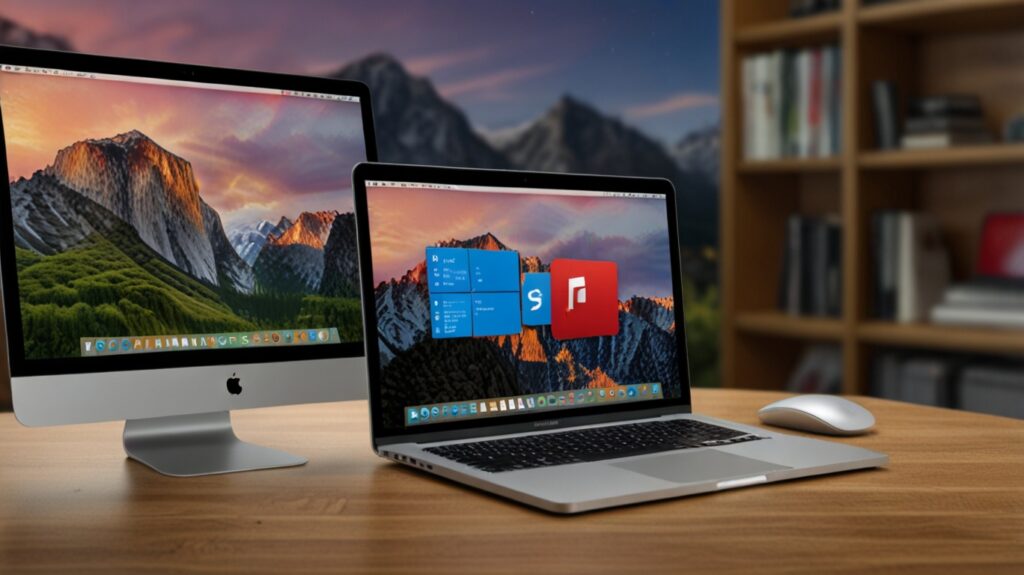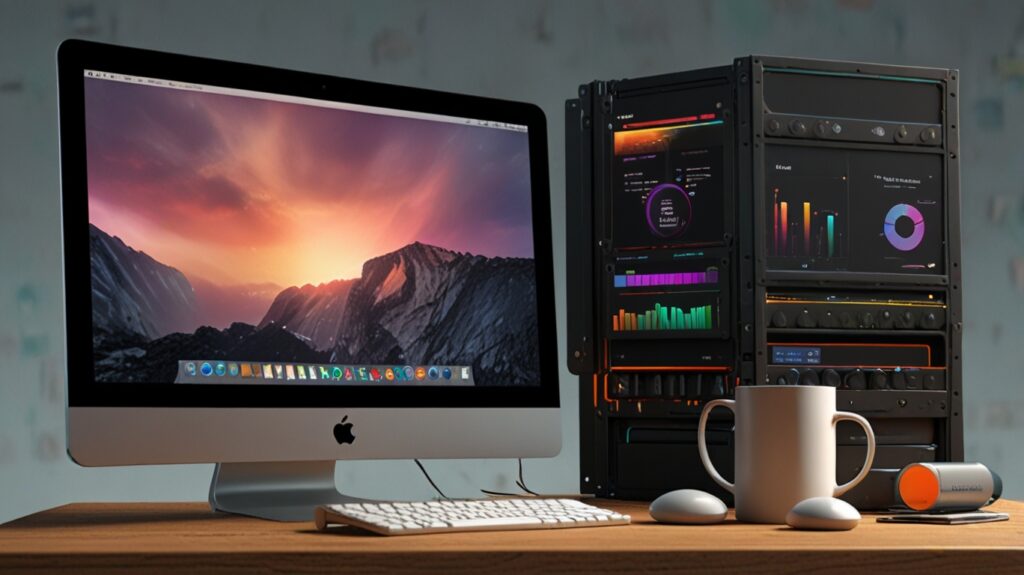Running Windows on a Mac has never been easier — whether you’re a developer, designer, gamer, or business user. Two of the top solutions for this are Parallels Desktop and VMware Fusion — both popular virtualization tools that allow you to run Windows inside macOS.
But which one is better? In this article, we’ll break down the differences between Parallels Desktop and VMware Fusion, compare features, performance, pricing, and compatibility (especially with Apple Silicon), so you can choose the best way to run Windows on your Mac.
🔄 Virtualization on macOS: A Quick Overview
Virtualization software allows you to run a full operating system — like Windows — as a virtual machine (VM) on top of macOS. Unlike dual-booting (which requires a restart to switch OS), virtualization lets you:
- Run Windows and macOS simultaneously
- Share files between systems
- Test or use Windows-only apps without leaving macOS
🥇 What Is Parallels Desktop?
Parallels Desktop is a premium virtualization tool designed specifically for macOS. It supports both Intel and Apple Silicon (M1/M2/M3) Macs, and is known for its sleek interface, performance, and tight integration with macOS.
✅ Key Features:
- Full support for Windows 10 & 11 ARM/x86
- Coherence Mode: run Windows apps like native Mac apps
- Seamless file and folder sharing
- Auto-optimized for gaming, development, and office use
- Frequent updates, especially for new macOS versions
💰 Pricing:
- Standard Edition: $99.99/year
- Pro Edition: $119.99/year
- Business Edition: $149.99/year
- Free trial available
🧰 What Is VMware Fusion?
VMware Fusion is another well-known virtualization platform, aimed more at power users and developers. It offers flexibility, advanced VM settings, and supports a variety of operating systems beyond just Windows.
✅ Key Features:
- Run Windows, Linux, and more on macOS
- Available for Intel and (limited) Apple Silicon
- More customization for networks, disk formats, and snapshots
- Fusion Player: Free for personal use
💰 Pricing:
- Fusion Player (Personal Use): Free
- Fusion Pro: $199 (one-time purchase)
- Fusion for Apple Silicon: still in Tech Preview (limited features)
🔍 Feature Comparison: Parallels Desktop vs VMware Fusion
| Feature | Parallels Desktop | VMware Fusion |
|---|---|---|
| Apple Silicon (M1/M2/M3) Support | ✅ Full support | ⚠️ Limited (Tech Preview) |
| Performance | ⭐⭐⭐⭐⭐ (Optimized) | ⭐⭐⭐⭐ (Good on Intel, limited on ARM) |
| Ease of Use | ⭐⭐⭐⭐⭐ (User-friendly) | ⭐⭐⭐ (More technical) |
| Coherence Mode / Unity View | ✅ Yes (Coherence Mode) | ✅ Yes (Unity View) |
| Snapshots & Advanced Settings | ✅ Yes (Pro Edition) | ✅ Yes (Free & Pro) |
| OS Support (Windows/Linux/macOS) | ✅ Yes | ✅ Yes |
| Free Version Available | ❌ No (Trial only) | ✅ Yes (Fusion Player) |
| Best For | Everyday users, business, devs | Developers, tech-savvy users |
🧪 Performance: Which Is Faster?
- Parallels is optimized for speed and responsiveness, especially on Apple Silicon Macs running Windows 11 ARM.
- VMware Fusion performs very well on Intel Macs, but lags behind Parallels on Apple Silicon as of 2025.
- Gaming and graphics: Parallels has better DirectX and OpenGL support, with automatic configuration for games.
⚠️ Important: If you’re on an Apple Silicon Mac and want stable Windows performance, Parallels is currently the only mature option.
🧩 Compatibility: Apple Silicon vs Intel Macs
| Mac Type | Parallels Desktop | VMware Fusion |
|---|---|---|
| Intel-based | ✅ Full support | ✅ Full support |
| Apple Silicon | ✅ Fully optimized (ARM Win) | ⚠️ Tech Preview only (limited) |
💼 Use Cases: Which Should You Choose?
✅ Choose Parallels Desktop If You:
- Want the most stable and polished experience on Apple Silicon
- Prefer ease of use and don’t want to tweak too much
- Need cohesive Windows/macOS integration
- Are a business or casual user needing reliable performance
✅ Choose VMware Fusion If You:
- Are a developer or advanced user who wants deep customization
- Run multiple types of OSs (e.g., Linux, BSD, older Windows)
- Are on an Intel Mac and want a free personal-use option
- Want control over VM networking, security, or snapshots
🤔 What About Free Alternatives Like VirtualBox or UTM?
If you’re looking for free or open-source alternatives, tools like VirtualBox or UTM might work — but:
- They lack performance and polish
- May not support Apple Silicon well (VirtualBox doesn’t)
- Require more manual setup
For most users, Parallels or VMware Fusion offer a far better experience — especially if you’re using your VM daily.
🙋♂️ Frequently Asked Questions (FAQs)
❓ Can I run games using Parallels or VMware?
Parallels is better for casual and mid-level gaming. VMware can handle some games, but neither is ideal for AAA gaming — for that, use Boot Camp (Intel only) or a dedicated Windows PC.
❓ Is Windows free on Parallels or VMware?
No. You still need a valid Windows license, even if you’re running the ARM version of Windows on Apple Silicon.
❓ Can I use USB devices or printers in the VM?
Yes — both Parallels and VMware allow USB passthrough, letting you use external devices in Windows.
❓ Do I need an internet connection to run a VM?
No, but some features like activation or downloads may require internet access.
✅ Final Verdict: Parallels vs VMware Fusion
| Category | Winner |
|---|---|
| Best for Apple Silicon | Parallels Desktop |
| Best for Intel Macs | Tie (Parallels for polish, VMware for flexibility) |
| Best Free Option | VMware Fusion Player |
| Best for Developers | VMware Fusion |
| Best for Simplicity | Parallels Desktop |
🏁 Conclusion
If you’re a Mac user looking to run Windows, Parallels Desktop offers the most complete, reliable, and user-friendly experience — especially on Apple Silicon Macs. For developers or advanced users on Intel Macs, VMware Fusion is a powerful (and often free) alternative.
Ultimately, your choice depends on your workflow, Mac hardware, and how much performance and integration you need.

